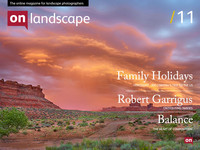Master photographer

Tim Parkin
Amateur Photographer who plays with big cameras and film when in between digital photographs.

John Blakemore
John Blakemore is, without doubt, one of the finest photographers, darkroom printers and teachers that the UK has ever produced. His work is currently held in the photographic collection of the Birmingham Library and currently holds the position of emeritus professor of photography at Derby University. John’s landscape photographs, taken between the years of 1970 and 1980 and his extensive still life work with tulips are reference points for many for what a personal photography project can look like.
Unlike many of the photographers we have discussed in our ongoing Masters section, John wasn’t a photographer from childhood, being more obsessed with drawing wildlife. His passion for photography was inspired when his mother sent him an issue of Picture Post when he was in Africa when serving in the RAF as a nurse. This edition had some extracts from ‘The Family of Man’, a pivotal photographic exhibition that was put together by Edward Steichen which featured the work of Dorothea Lange, Cartier Bresson, Edward Weston, Bill Brandt. These images struck a chord in his burgeoning political psyche and he bought a camera and started taking pictures whilst still in the forces. On leaving he tried to make a living as a freelance photographer but the lifestyle didn’t suit (he didn't’ like having to look for work).
Whilst working for a studio, he was asked to take over a portrait studio that was bought out by his employer and on the day the owner was told to go through the equipment with John, he was nowhere to be seen. John was confronted with an 8x10 studio camera and darkroom and ‘sort of guessed’ his way around it, in the end working their for four years. He was also working on his own documentary photography in Coventry, shooting the new immigrant population.
In 1970 he was asked to teach photography after trying to find jobs as a printer in London (even working as a camera salesman at one point). The University of Derby became his new employer where he taught the Diploma in Creative Photography.
His landscape photography began just before he moved to Derby, coinciding with the break up of his first marriage. He spent some a winter in wales with the woman who was to become his second wife and got absorbed in the landscape but didn’t start photographing it. It was only on his return and upon receiving the offer of an exhibition that he thought back to that time in the landscape and returned to wales with a camera.
His landscape photography was always about ideas about place rather than just the place itself. He wanted to capture a sense of the forces that shape the landscape at large. The results are photographs that have a raw power with a presentation that can look uncomposed to the hurried eye but is actually exquisitely balanced.
Nearly all of John’s work is based on the exploration of a theme or topic and worked out as a series of pictures over time. For instance his original work on the metaphoric use of wounds of trees accompanied the break up of his first marriage. Then, as he became more entranced by the landscape, he started to try to capture some of the elemental forces at work (initially inspired by the raw landscape of Wales) such as the wind, change, play, water, etc. Each of these themes would be explored in minutiae, working from the study of one trip to the plan for the next. Taking visual discoveries and expanding on them to see where they took him. It is these series of pictures that many find so fascinating.
in the late 1980’s he stopped his landscape work when he read a story about how landscape photography wasn’t addressing the more political side of the world and he couldn’t take pictures of beauty when the world was being wrecked. It almost seemed like his desire to take beautiful pictures conflicted with his understanding of critical theory. He took an MA in film studies in order to try to work out a foundation point to continue working as a photographer.
He had started working on still life work (thistles and also the tulip project) around the time he was taking his film studies MA (I think the tulip work started as a way of avoiding his thesis writing).
He worked on tulip photography for over a decade (I strongly suggest buying John Blakemore’s Black and White Photography Workshop which is one of the best books on the art of photography I have read - and not a bad technical book to boot). His still life work is all about metaphor and gesture.
Although John retired officially in 2001 he has since been asked to return back to work and is still enjoying teaching.
I strongly urge anybody who finds this work at all interesting to buy a copy of John Blakemore's Black and White Photography Masterclass. Despite the tutorial-esque title, the book is also a documentation of John's working method - see the review here.
Read articles on:
- John Blakemore Book Binding and Sequencing Workshop
- Photographs 1951-2010 – John Blakemore
- Black and White Photographers Workshop – John Blakemore










